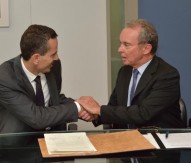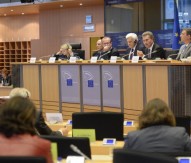
2014 EU Digital Scoreboard released
The 2014 EU Digital Scoreboard has been published, revealing that the European Commission is on track to complete 95 of its 101 digital actions by 2015.
EU citizens and businesses are going online more, whilst also gaining greater confidence and skills in ICT. However, they often lack the high speed broadband – especially in rural areas – to satisfy this digital appetite and the looming digital skills gap is still a big problem.
European Commission Vice-President responsible for the Digital Agenda, Neelie Kroes, said: “Most Europeans now live digital lives and they are hungry for more. We have solved the internet access problem, but the digital skills gap persists. Unless we all do more, we will face a digitally illiterate underclass in Europe.”
The scoreboard reveals that the number of people who use the internet at least once per week has increased from 60% to 72% since 2010. Greece, Romania, Ireland, the Czech Republic and Croatia have shown the greatest increases.
In Denmark, Sweden, the Netherlands and Luxembourg, over 90% of adults use the internet, whilst non-users across the EU are down a third since four years ago. Progress has also been made amongst disadvantaged groups – usage by the unemployed, those with low education levels and older groups, is up to 57% from 41% four years ago. On current trends the target of 60% will be reached before 2015. Significantly, 100% of Europeans now have access to broadband.
However, challenges still remain, according to the Scoreboard. Only 14% of businesses with under 250 employees are selling online, without a single country coming close to achieving the EU average target of 33% by 2015. Only 18% of rural households have access to high speed broadband, while online government services stalled in 2013, only being used by 42% of the EU population. Continuing at this rate will not see EU member states achieve the target of 50% by 2015.




